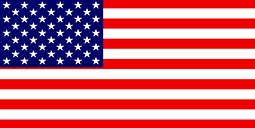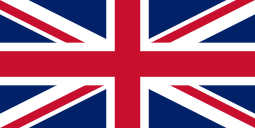Protective Hairstyles For 4C Hair
Protective Hairstyles For 4C Hair
One of the major challenges that women with 4C hair face is growing out their hair. And this is because this hair type is prone to shrinkage. Besides, it is prone to breakage and damage as well. Hence, the need to protect the hair. This is why protective hairstyles come into play. Protective hairstyles do not only protect 4C hair from damage or breakage but also help promote length retention. Read on to learn about the protective styles for 4C hair.

4C Hair: Why Extra Attention is Essential
Hair type is typically categorized using the Andre Walker hair typing system, which classifies hair into four main types (Type 1 to Type 4) based on its texture and curl pattern. Type 4 hair, often referred to as 4C hair, has a unique texture that can require more care compared to other hair types. Here are some reasons why 4C hair may need more attention:
- Tight Curl Pattern: 4C hair has a tight curl pattern with densely packed curls or coils. This makes it more prone to tangling and knotting, requiring careful detangling to prevent breakage.
- Prone to Dryness: The natural oils produced by the scalp have a harder time traveling down the coils of 4C hair due to its tight pattern. This can result in dryness, making it important to moisturize regularly and use products that help retain moisture.
- Shrinkage: 4C hair has high shrinkage, meaning it can appear shorter than it actually is when it's in its natural state. This can make it challenging to manage and style, requiring patience and specific techniques.
- Fragile Strands: The tight curl pattern also means that the hair shaft is more fragile and prone to breakage. Gentle handling, protective styling, and avoiding excessive manipulation are important to maintain healthy hair.
- Requires Gentle Detangling: Detangling 4C hair can be a delicate process to avoid breakage. It's often recommended to detangle hair when it's damp and with the help of a good conditioner or detangling product to minimize damage.
- More Susceptible to Shrinkage: 4C hair is highly susceptible to environmental factors such as humidity, which can cause it to shrink and become more difficult to manage. Protective styles can help minimize exposure to such factors.
- Limited Natural Oils: The natural oils produced by the scalp may not distribute as easily through 4C hair due to its tight curl pattern. This can lead to drier hair, necessitating the use of moisturizing products and oils to maintain hydration.
In summary, the unique characteristics of 4C hair, including its tight curl pattern, susceptibility to dryness, and fragile nature, contribute to the need for extra care and attention. Adopting a consistent and gentle hair care routine, using appropriate products, and embracing protective styling can help maintain the health and beauty of 4C hair.
What are protective styles?
Protective hairstyles are styles that help you hide away your hair from touching or detangling. Many 4c hair women could attest to it that you have to moisturize and detangle your hair daily if you want to style it. And this is what causes breakage most times. But with protective hairstyles, you get to leave your hair untouched for a while without any form of manipulation. If you are looking for protective hairstyles for 4c hair, then you are at the right place. Here are some natural hairstyles for 4c hair:
- Twists
One of the main reasons why women with 4C hair go for protective hairstyles is to prevent weighing down their natural hair. And this is exactly what the twist helps you achieve. This hairstyle is suitable for women with thick and dense hair. On the other hand, those with thin hair can achieve this style with the help of some extensions. To create this style, you will need a rat tail comb, a wide-tooth comb, and a leave-in conditioner.
First, moisturize the hair with a moisturizer or coconut oil, then detangle it with a wide-tooth comb. Then, section your mane horizontally, and secure the front part with an elastic band. From the back, section out a small portion at the nape of your neck, then apply the leave-in conditioner. Starting with that small portion section out a part based on how big you want your twist to be. Then part it into two and start twisting it from the root to the end. Roll the end around your finger to form a curl to secure the twist. You might want to accessorize with hair accessories to add more fun to your look.
- Cornrows
Gone are the days when cornrows serve as a base for sew-in installation. In recent times, you can rock this protective style for any occasion or event. And it helps to promote healthy hair growth. You can braid your natural mane into cornrows or add some extensions. However, while braiding your hair into a cornrow, you should not pull too tight so that your root will not break and your edges will not pull off.
Braiding your hair into cornrows is quite easy. You only need to section your hair into two vertically, right from the crown of your head to the nape of your neck. Then, hold one section with a ponytail holder. Divide the other section into two or three depending on how thick and dense your mane is. Braid each part into cornrows. If you wish to add hair extensions, you can add them towards the nape of your neck to give your cornrow length. Visit Ulahair to get quality human hair extensions for your mane.
- Box braids
Box braids are one of the best protective hairstyles out there. Whether they are big or small, they give you a stylish look that you can rock anywhere. They help maintain your follicles and scalp’s health. Besides, they last longer, so if you are on a tight schedule, this 4c hairstyle is suitable for you. To create this style, you will need a few packs of hair extensions that you can get at Ulahair.
To braid your hair into box braids, start with a clean mane. Then pack all your hair towards the crown of your head and secure it loosely with an elastic band. Then section out a portion of your hair at the nape of your neck. Part that section into smaller parts depending on how big you want your braid to be. Then start braiding each part with your hair extension. Do this till your finish braiding that section. Then section out another part and repeat the process until you finish braiding your whole hair.
- Bantu knots
One of the natural hairstyles for 4c hair is the Bantu knots. This is a quick protective style to try after a wash day. It might be a bit difficult to create this style on your head, but it looks lovely when you get it right. To start with, you will need a pack of hair extensions. Fold the extension into four and cut out one part of it. Pull the extension so the end will not be blunt, and comb it to make it smooth. Then divide your hair into as many sections as you desire for the Bantu knots. Apply edge control to each section, and secure it tightly with an elastic band. Starting with a section, pick out a part of the hair extension and use it to braid your natural hair. When you get to the end of your natural hair, spray with hair spray to tame flyaways and swirl the extensions. After that, roll it around your natural hair. Voila! You have created a Bantu knot. Repeat this till you cover your whole hair.
- Crochet braids
One of the protective 4c hairstyles is the crochet braids. Apart from the fact that it protects the hair from damage, it is easy to install and remove. With this protective hairstyle, you do not need to be a pro at braiding. There is more than one method of installing crochet braids, and you can use any hair extension of your choice. One of the methods is installing it without braiding your hair into cornrows. For this method, you only need to pack your hair into a ponytail. The beautiful thing about this style is that it is versatile, as there are different ways you can style it to suit various occasions.
How to crochet braids?
Crochet braids are a popular and versatile protective hairstyle. Here's a step-by-step guide on how to crochet braids:
Materials Needed:
- Crochet needle
- Braiding hair/extensions
- Hair moisturizer or water
- Leave-in conditioner
- Hair tie/bobby pins
Step-by-Step Instructions:
1. Prepare Your Natural Hair:
- Wash and condition your natural hair.
- Detangle your hair to ensure it's free of knots and tangles.
- Optionally, braid or cornrow your natural hair into a desired pattern to create a base for the crochet braids.
2. Select Your Braiding Hair:
- Choose the type and color of braiding hair you want. It can be synthetic or human hair, depending on your preference.
3. Install the Latch Hook:
- Open the latch hook and insert it underneath the base of a cornrow or braid. Close the latch hook once it's underneath.
4. Attach the Braiding Hair:
- Place a section of the braiding hair onto the latch hook, ensuring the latch is closed.
- Pull the hook back through the base, bringing the hair with it.
5. Create a Knot:
- Tie a simple knot with the braiding hair to secure it to your natural hair. You can loop it once or twice, depending on your preference.
6. Repeat the Process:
- Continue this process, working from the back of your head to the front, or vice versa.
- Ensure consistent spacing between the braids for a neat and even look.
7. Trim and Style:
- Trim the braids to your desired length.
- Style the braids as desired, whether it's a bob, long curls, or any other preferred style.
8. Care for Your Crochet Braids:
- Moisturize your scalp and braids regularly to prevent dryness.
- Cover your hair with a satin or silk scarf at night to reduce friction and maintain the style.
Tips:
- You can experiment with different braiding patterns for varied looks.
- Use a crochet needle with a latch for easier installation.
- Be gentle while handling your natural hair to prevent breakage.
Remember, practice makes perfect, so take your time when learning how to crochet braids. Once you get the hang of it, you can enjoy a versatile and low-maintenance protective hairstyle.
Faux locs
Faux locs are another hairstyle for 4c hair. Gone are the days when you waited for years to grow out your locs. In recent years, locs can be obtained in the blink of an eye. Faux locs are pretty soft and light, so they do not weigh down your mane. Besides, it is a low-maintenance style that only needs conditioning and can last as long as 4 to 6 weeks. There are two methods of installing faux locs, you can either crochet it or opt for the wrapping method. To get the best faux locs in the market, visit Ulahair for best quality human hair extensions.
Conclusion:
In summary, for healthy 4C hair, choosing and maintaining the right protective hairstyles is crucial. Styles like braids and twists help minimize damage, retain moisture, and protect against environmental factors. A consistent and gentle hair care routine is key for overall well-being. Understanding and embracing these practices not only showcase beautiful looks but also support the health of natural 4C hair.

 USD
USD EUR
EUR GBP
GBP CAD
CAD












